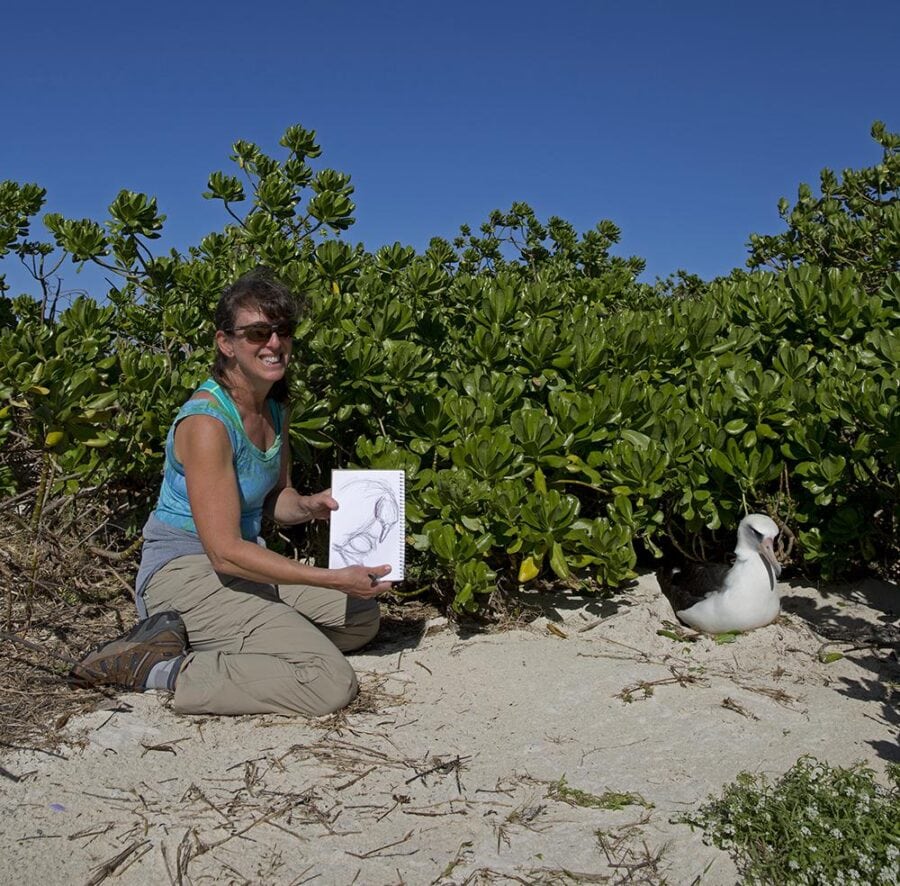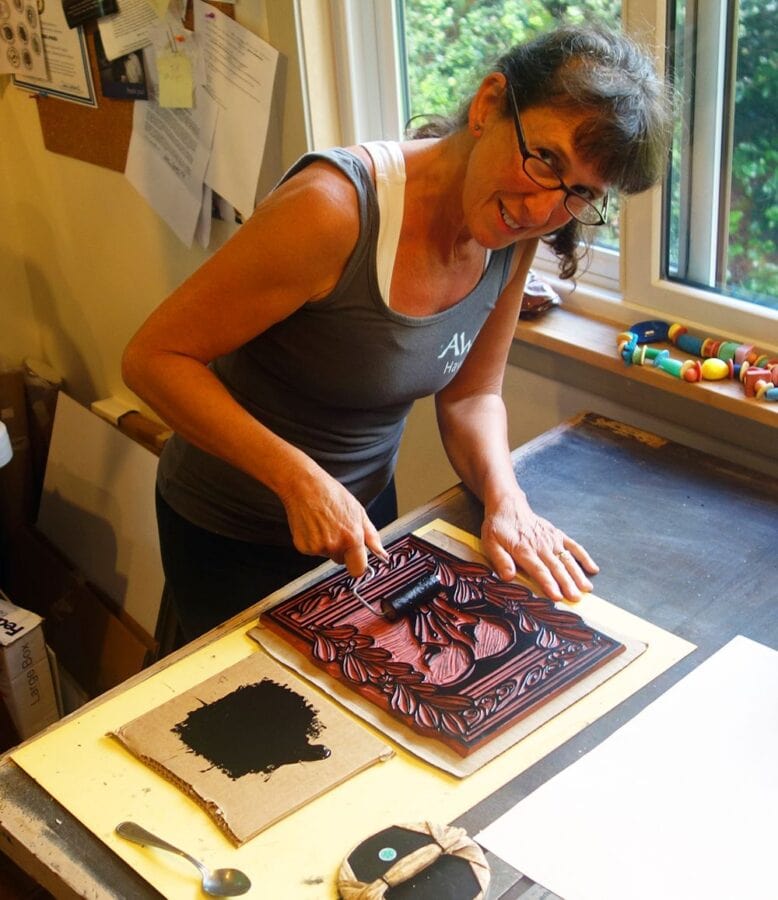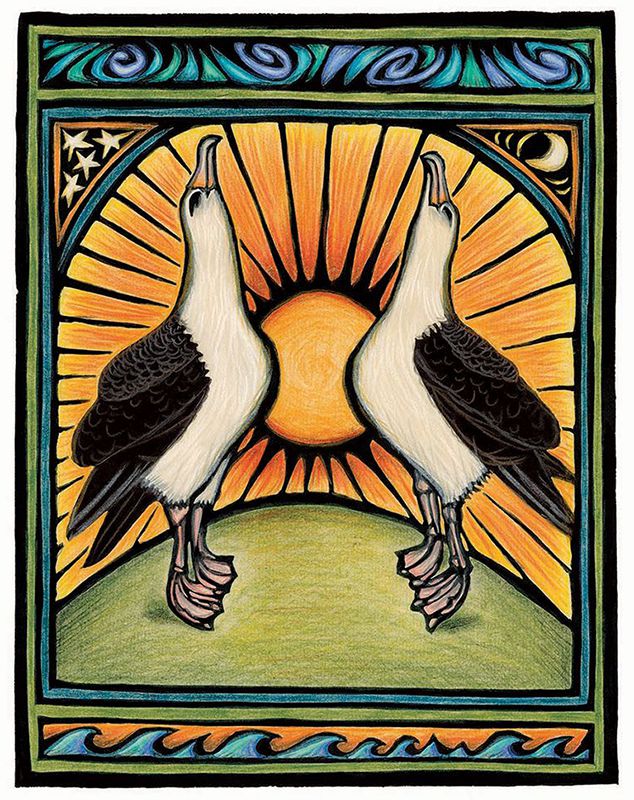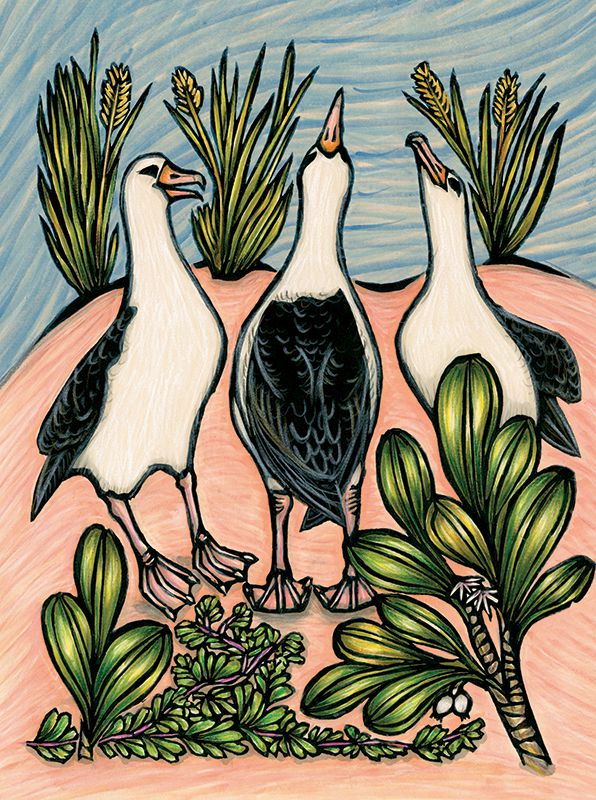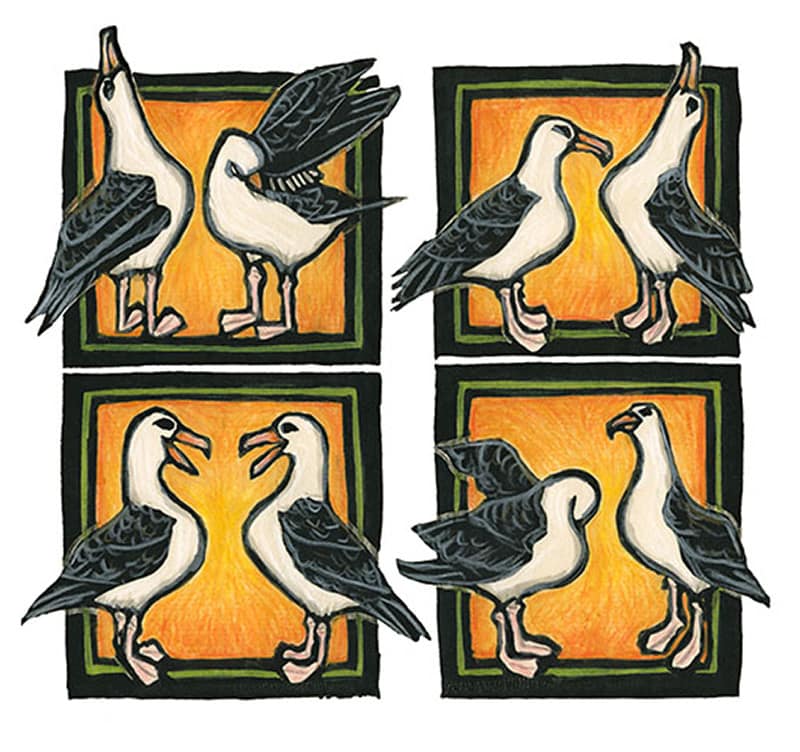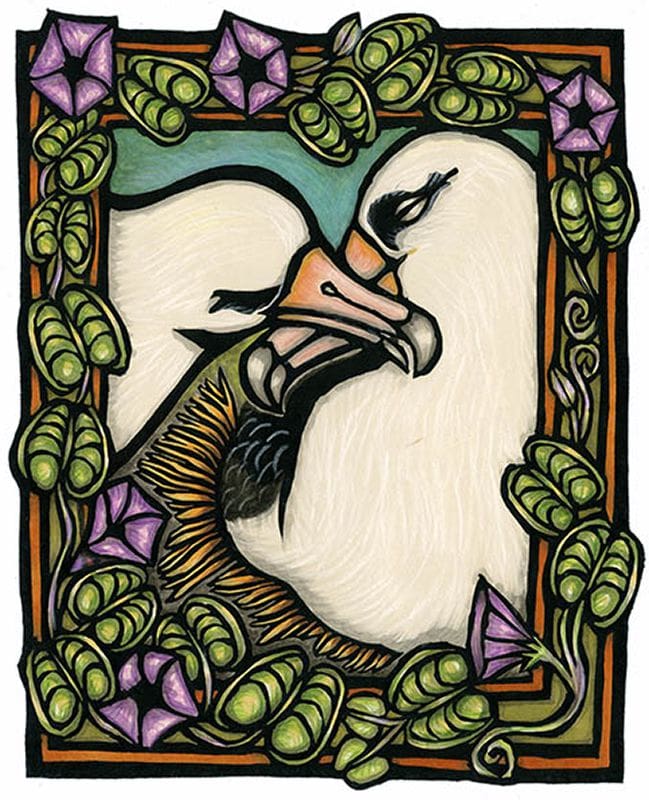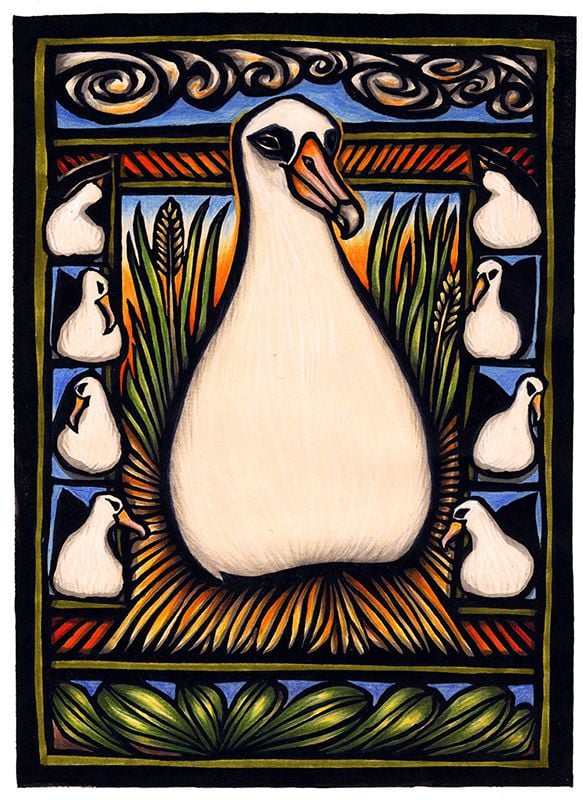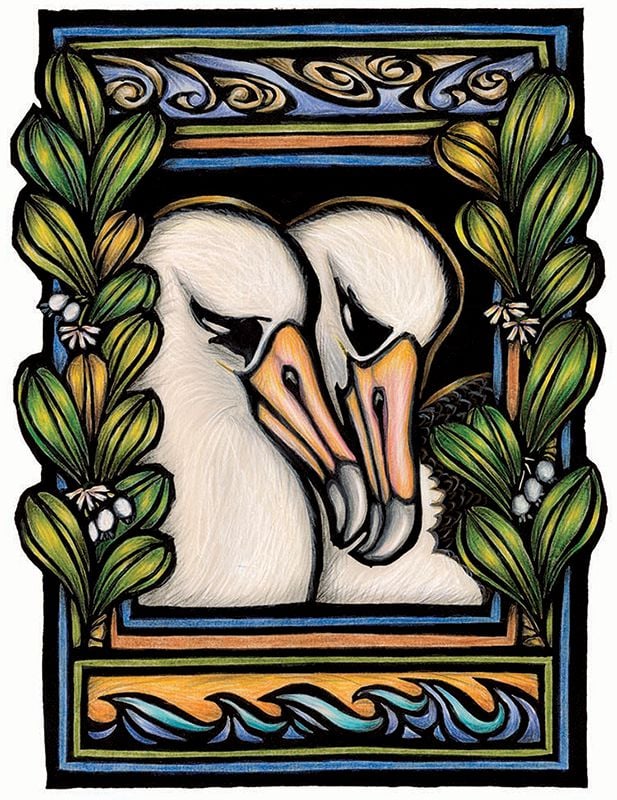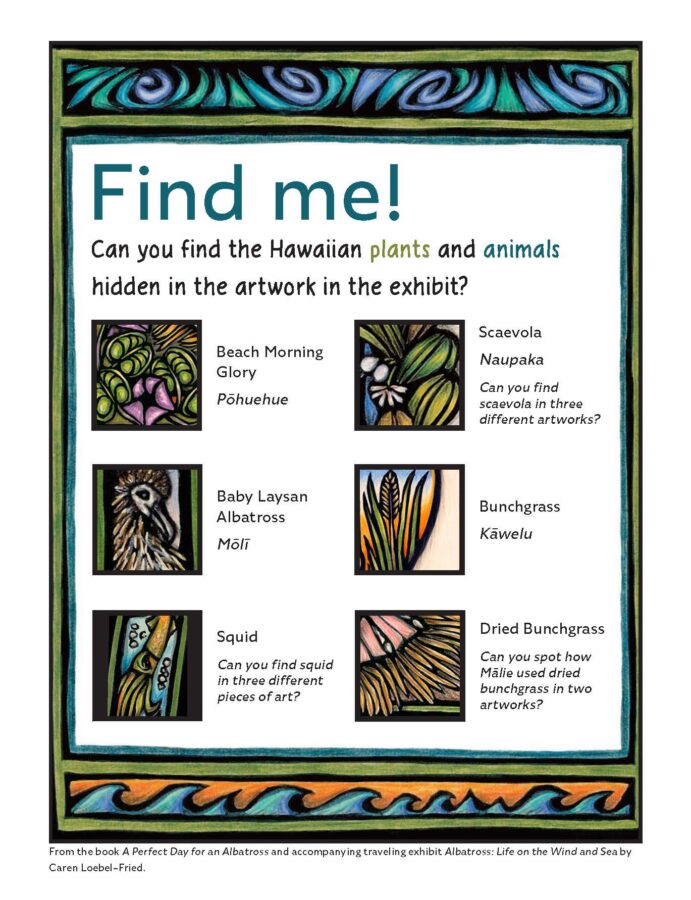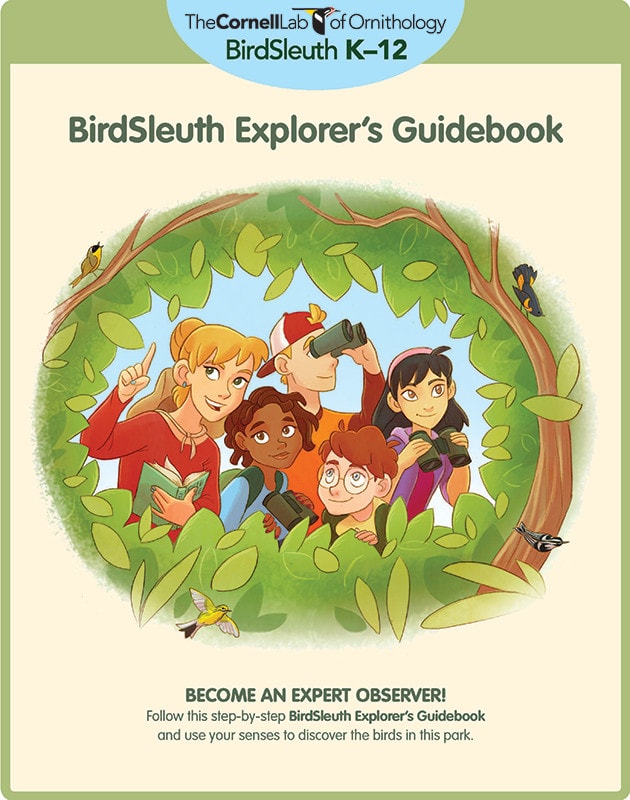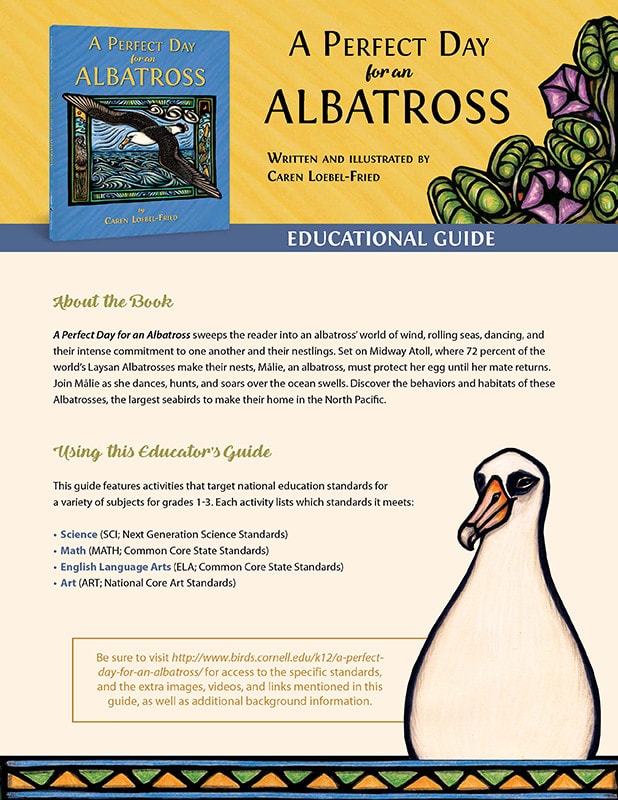Presented by YOUR MUSEUM


Albatross: Life on the Wind and Sea is a traveling exhibition from the Seymour Marine Discovery Center, Caren Loebel-Fried, and Exhibit Envoy, and is based on the book “A Perfect Day for an Albatross,” published by Cornell Lab Publishing Group. This online exhibition is adapted from the physical touring exhibition. All artwork and photos © Caren Loebel-Fried, except where noted.
Introduction
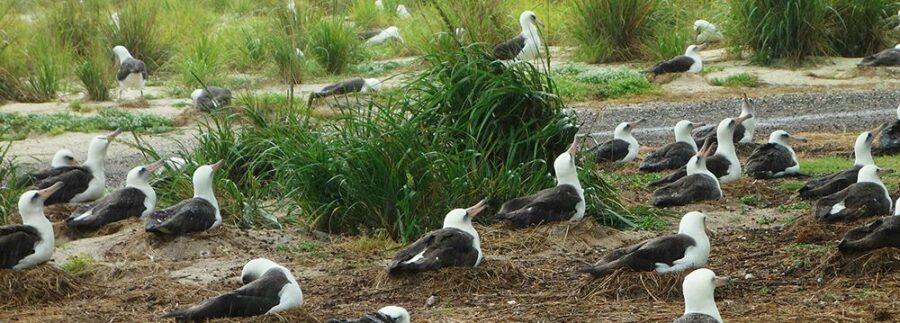
Albatrosses survive and fly with wind, spending 95% of their lives over the open ocean. They flap a little, but mostly soar through the air, using the wind to sail over the ocean for long periods of time. They only return to land to find and meet their life mates, lay their egg, and raise their young. When it’s time to nest, both parents share responsibilities for their egg. While one albatross incubates the egg for up to three weeks, the other travels hundreds or thousands of miles to find food in colder waters. When the traveling bird returns, the parents trade roles.
Over 70% of the world’s Laysan albatrosses – nearly a million birds – raise their young on the small Northwestern Hawaiian islands of Midway Atoll (Papahānaumokuākea in Hawaiian).
Although it wasn’t always this way, people now need special permission to go to Midway. Author and artist Caren Loebel-Fried is one of the lucky humans who gets to spend time there! On the islands, Caren has worked amongst hundreds of thousands of nesting Laysan, Black-footed, and Short-tailed Albatrosses, counting nests with a census team and researching for her artwork for the U.S. Fish and Wildlife Service.
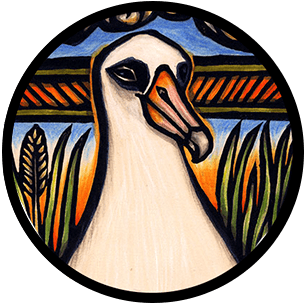
On Midway, Caren interacted with individual albatrosses. This led her to imagine the story of a particular Laysan Albatross named Mālie (pronounced MAH-lee-eh, and meaning “calm” in Hawaiian). Look for Mālie throughout this exhibit, and listen in as she tells stories about her life!
North Pacific Species of Albatross
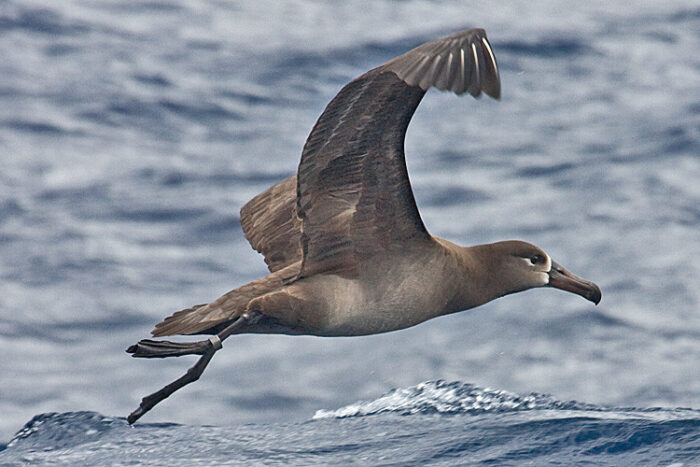
Black-footed Albatross. Photo by Tony Morris. 
Short-tailed Albatross. Photo by E.J. Peiker. 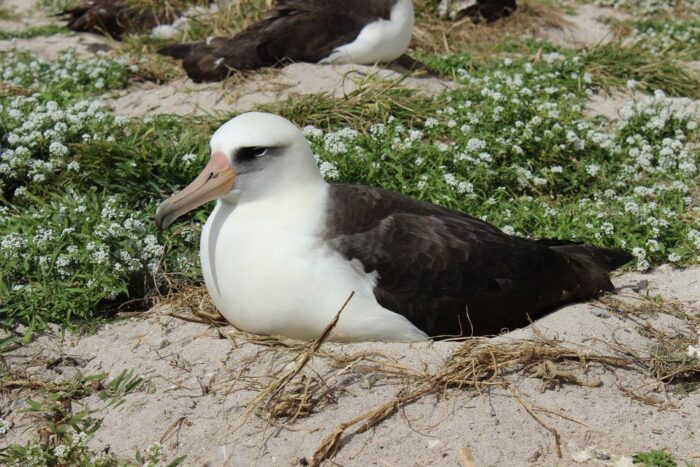
Laysan Albatross. Photo from US Fish and Wildlife Service.
What does an albatross sound like?
About the Artist
Caren Loebel-Fried is an author and artist from Volcano, Hawai’i who lives part time in Half Moon Bay, California.
Caren creates award-winning storybooks about nature and culture, and makes iconic, educational art for government agencies and conservation organizations. Birds, conservation, and the natural world are the foundation for her work. She uses the power of pictures and stories to open up the world of wildlife for people young and old.
Creating Artwork through Block Printing
This content is only available in the full online exhibition.
Midway Atoll
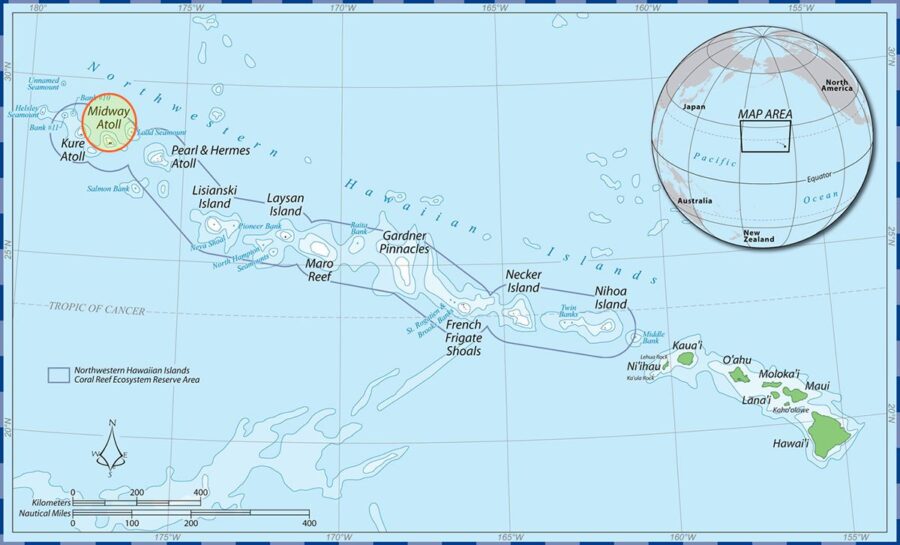
Albatrosses spend 95% of their lives over the open ocean. But, albatrosses have to return to land to nest. Midway Atoll is where over 70% of the world’s Laysan albatrosses – nearly a million birds – raise their young.
Midway Atoll is a set of three small, sandy coral islands in the Hawaiian Archipelago far away from most predators. Midway is about 3,200 miles from the coast of California and halfway to Japan. The Hawaiian name for Midway is Pihemanu, which means “loud din of birds.”
Take a virtual tour of Midway Atoll!
Feeding
This content is only available in the full online exhibition.
The Dance
When young albatrosses fledge (develop wing feathers large enough for flight), they soar over the Pacific Ocean for four years or more. Then, they return to the island of their birth to meet other albatrosses and practice their dance. Dancing and vocalizations are very important to these birds; albatrosses choose mates for life by dancing together, though it takes a few years of practice to learn how to dance correctly and find a mate.
After they mate, albatrosses still spend most of their lives alone over the ocean. But, they return to land in late fall every year, arriving at the same place as their mate.
Two Laysan Albatrosses practice a courtship ritual (dancing) with natural sounds, including calls and bill-clacking.

When I returned to the island for the first time, there were albatrosses all around, some sitting on nests, some dancing, wailing, grunting, and bill-clacking. I had seen dancing when I was a youngster, so I joined a group of other young albatrosses. Together we stumbled through the movements and sounds. It would take more practice to do all the right moves. – Mālie
Nesting
How Can I Help?
Albatross Activities
Continue the fun at home! Download and print a quick scavenger hunt, coloring pages, and even more educational activities using the links below.
Scavenger Hunt
Can you find the Hawaiian plants and animals hidden in the artwork in the exhibit? First, download and print this scavenger hunt. Then, look back through this exhibit to find all of the Hawaiian flowers, grasses, and animals that the artist has included in her art.
Coloring Pages
Download coloring pages featuring artwork by Caren Loebel-Fried. Share your finished creations with the museum, or on social media!
This content is only available in the full online exhibition.
Educational Materials
Explore the world of birds with these kids’ learning guides from Cornell Lab of Ornithology! Use your senses to observe and learn about local birds through the BirdSleuth Explorer’s Guidebook. Or, dive deeper into Hawai’i and the lives of Laysan Albatrosses with an educational guide for “A Perfect Day for an Albatross,” the book upon which this exhibit is based. What more can you discover?
Thank You

Thank you to Your Museum for hosting this exhibit.
[Acknowledgements and Other Info Here]
MISSION and PROGRAMMING INFORMATION
To find out more about the MUSEUM, visit YOUR WEBSITE today.
